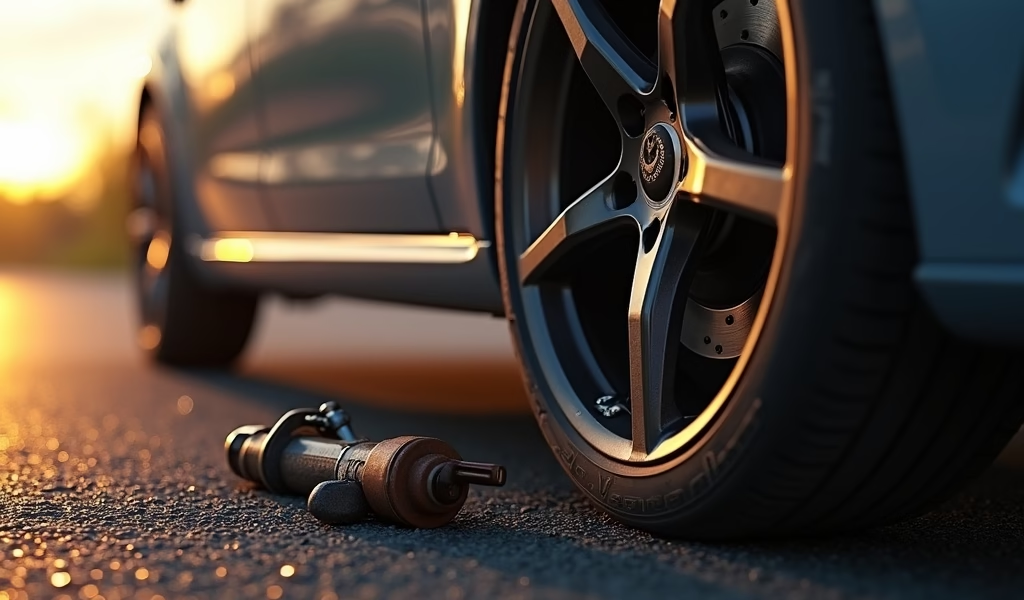Overview
This article provides six essential maintenance tips for front-wheel drive vehicles, including tire care, alignment, CV joint maintenance, transmission fluid checks, proper driving techniques, and seasonal maintenance. Front-wheel drive systems offer benefits like better traction, fuel efficiency, and space utilization, but require specific maintenance approaches to ensure longevity and optimal performance.
Table of Contents
- Understanding Front Wheel Drive
- Benefits of Front Wheel Drive
- Essential Tip 1: Tire Maintenance
- Essential Tip 2: Alignment and Balancing
- Essential Tip 3: CV Joint Care
- Essential Tip 4: Transmission Fluid Maintenance
- Essential Tip 5: Proper Driving Techniques
- Essential Tip 6: Seasonal Maintenance
- Conclusion
- Frequently Asked Questions
Understanding Front Wheel Drive
Front wheel drive systems have become the standard in most modern passenger vehicles, and for good reason. As a mechanic with over 15 years of experience, I’ve seen firsthand how front wheel drive configurations offer significant advantages for everyday drivers. In a front wheel drive (FWD) setup, the engine delivers power to the front wheels, which are responsible for both steering and propelling the vehicle forward.
This design differs significantly from rear-wheel drive, where the rear wheels provide the pushing force while the front wheels handle steering. The integrated nature of front wheel drive systems means they require specific maintenance approaches to ensure longevity and optimal performance.
Most compact cars, sedans, and many crossovers utilize front wheel drive, making it the most common drivetrain configuration on today’s roads. Understanding how to properly care for these systems can save you thousands in repair costs and extend your vehicle’s lifespan considerably.
Benefits of Front Wheel Drive
Before diving into maintenance tips, it’s worth understanding why manufacturers frequently choose front wheel drive configurations. The primary advantage is improved traction in everyday driving conditions, especially in rain and light snow. Since the engine weight sits directly over the drive wheels, you get better grip when accelerating on slippery surfaces compared to rear-wheel drive vehicles.
Front wheel drive vehicles also tend to be more fuel-efficient. The more compact drivetrain design reduces weight and mechanical loss, allowing engineers to create lighter vehicles that consume less fuel. For the average driver, this translates to savings at the pump without sacrificing performance.
Space efficiency is another major benefit. Without the need for a driveshaft tunnel running to the rear wheels, front wheel drive vehicles offer more interior room and cargo space. This design advantage makes small cars feel surprisingly spacious inside, which is why most compact and midsize vehicles use this configuration.
From a cost perspective, front wheel drive systems are typically less expensive to manufacture, maintain, and repair than all-wheel drive or rear-wheel drive setups. With fewer components involved in the drivetrain, there are simply fewer things that can go wrong.

Essential Tip 1: Tire Maintenance
In front wheel drive vehicles, tire care is absolutely critical. Your front tires handle steering, braking, and power delivery—triple duty that leads to faster wear compared to the rear tires. Regular rotation every 5,000-7,000 miles is essential to promote even wear across all four tires and maximize their lifespan.
Proper inflation is equally important. Front wheel drive vehicles place unique weight distribution demands on tires, making correct pressure crucial for handling, fuel economy, and tire longevity. I recommend checking tire pressure at least once a month and before any long trips. The correct pressure specification is usually found on a sticker inside the driver’s door jamb, not on the tire itself.
When shopping for replacement tires, consider options specifically designed for front wheel drive applications. Choosing the right tires with appropriate tread patterns can significantly improve traction, especially in adverse weather conditions. Modern tire technology has evolved to address the specific needs of front-drive vehicles with designs that resist the particular wear patterns common to these drivetrains.
Tire tread depth is particularly important for front wheel drive vehicles. Since the front tires handle acceleration forces, they need adequate tread to channel away water and maintain grip. I suggest using the penny test monthly: insert a penny into the tread groove with Lincoln’s head upside down—if you can see the top of his head, it’s time for new tires.
Seasonal Tire Considerations
For those living in regions with distinct seasons, consider dedicated winter tires for front wheel drive vehicles during cold months. The improved traction they provide can make a significant difference in safety and performance. According to studies from Tire Rack, winter tires can improve stopping distances by up to 30% compared to all-season tires in snowy conditions.
Remember that uneven tire wear often indicates alignment issues, which brings us to our next essential maintenance tip.
Essential Tip 2: Alignment and Balancing
Front wheel drive vehicles are particularly sensitive to alignment issues. When your alignment is off, it doesn’t just affect handling—it can lead to premature tire wear, reduced fuel economy, and even damage to suspension components. I recommend checking your alignment at least annually or whenever you notice the vehicle pulling to one side.
Telltale signs that your front wheel drive vehicle needs alignment include uneven tire wear (especially on the inside or outside edges), the steering wheel being off-center when driving straight, or the vehicle consistently pulling to one side. Don’t ignore these symptoms—addressing alignment issues early can save you from costly tire replacements and suspension repairs down the road.
Wheel balancing is equally important. Imbalanced wheels create vibrations that you’ll feel through the steering wheel or floorboard, particularly at highway speeds. These vibrations aren’t just annoying; they place additional stress on your vehicle’s bearings, bushings, and other components. Have your wheels balanced whenever you purchase new tires and rebalanced if you notice vibrations developing.
Many drivers overlook the impact that potholes and curb strikes can have on alignment. Even a single significant impact can throw off your vehicle’s carefully calibrated suspension geometry. If you’ve had a rough impact, it’s worth having your alignment checked even if you don’t notice immediate symptoms.
DIY Alignment Checks
Between professional alignments, you can perform some basic checks yourself. Park on a flat surface and examine your tires—if one shows significantly more wear on either the inside or outside edge, it’s time for an alignment service. Similarly, if your steering wheel isn’t centered when driving straight on a level road, your alignment likely needs attention.
Professional alignment services typically cost between $75-150, making them one of the most cost-effective preventative maintenance services for your front wheel drive vehicle. The National Highway Traffic Safety Administration (NHTSA) notes that proper wheel alignment can improve fuel efficiency by up to 10% while extending tire life by thousands of miles, making it a wise investment for any vehicle owner.
Essential Tip 3: CV Joint Care
Constant Velocity (CV) joints are critical components unique to front wheel drive vehicles. These specialized joints connect the transmission to the wheels while allowing them to turn and move up and down with the suspension. Because they’re constantly in motion and exposed to road elements, they require specific attention.
The most vulnerable part of the CV joint system is the protective rubber boot that keeps grease in and contaminants out. When these boots crack or tear, it’s only a matter of time before the joint fails due to loss of lubrication and contamination. Regular visual inspection of these boots can save you from expensive repairs down the line.
Warning signs of failing CV joints include clicking noises when turning (especially during sharp turns), vibration during acceleration, or grease visible on the inside edge of your tires or wheel wells. If you notice any of these symptoms, don’t delay—CV joint failures typically worsen quickly once they begin.
Many drivers mistakenly believe that a clicking CV joint can wait for repair. In reality, continuing to drive with a damaged CV joint can lead to it failing completely, potentially leaving you stranded. The cost difference between replacing just the boot (typically $150-300) versus replacing the entire axle assembly after failure (often $400-800) makes early intervention the financially sensible choice.
Protecting Your CV Joints
Beyond regular inspection, there are driving habits that can extend CV joint life. Avoid excessive wheel spin, which places extreme stress on these components. Similarly, take wide turns when possible rather than cranking the wheel to its limits, which places the joints at their most extreme angles.
If you frequent rough roads or have a lowered vehicle, be particularly vigilant about CV joint health. The increased articulation and potential for impacts makes these driving conditions particularly hard on CV joints. According to Motor Magazine, CV joints in vehicles that regularly navigate rough terrain may need inspection twice as frequently as those driven primarily on smooth roads.

Essential Tip 4: Transmission Fluid Maintenance
The transmission in a front wheel drive vehicle works particularly hard. It’s managing power delivery to the same wheels that steer the vehicle, all while being packed into a relatively small space near the engine. This challenging environment makes transmission fluid maintenance absolutely essential.
Unlike engine oil, transmission fluid doesn’t burn off, but it does break down and become contaminated over time. Most manufacturers recommend transmission fluid changes every 30,000 to 60,000 miles, but I often suggest the lower end of that range for vehicles driven in stop-and-go traffic or hilly areas where the transmission works harder.
The color and smell of transmission fluid can tell you a lot about its condition. Fresh fluid is typically bright red and has a slightly sweet smell. If your fluid appears brown or smells burnt, it’s well past time for a change. Some newer vehicles use sealed transmissions that claim to have “lifetime” fluid, but in my professional experience, even these benefit from fluid services around the 100,000-mile mark.
For vehicles with automatic transmissions, consider a transmission flush rather than just a drain and fill. A proper flush removes more of the old fluid and contaminants from the torque converter and other hard-to-reach areas. This more thorough service can significantly extend transmission life, especially in high-mileage vehicles.
Transmission Cooling Considerations
Transmission overheating is a common cause of premature failure in front wheel drive vehicles. If you regularly tow or drive in mountainous regions, consider adding an auxiliary transmission cooler. These relatively inexpensive additions can dramatically extend transmission life under demanding conditions.
Remember that transmission problems rarely fix themselves. If you notice hesitation during acceleration, rough shifting, or unusual noises from the transmission area, have it inspected promptly. Early intervention can often prevent minor issues from developing into major transmission failures that might cost thousands to repair.
Essential Tip 5: Proper Driving Techniques
How you drive your front wheel drive vehicle can significantly impact its longevity and performance. Unlike rear-wheel drive cars that can handle aggressive acceleration without much drivetrain stress, front wheel drive systems require a more thoughtful approach.
Wheelspin is particularly damaging to front wheel drive components. When accelerating hard, especially from a stop or on slippery surfaces, try to apply power smoothly rather than stomping on the accelerator. This gentle approach reduces stress on CV joints, differential, and transmission components while actually improving your traction and acceleration.
Hard cornering while accelerating (known as “powering through turns”) places extreme stress on front wheel drive components. The front wheels are already working hard to turn the vehicle—adding power delivery to that equation multiplies the forces involved. Save aggressive cornering for the race track and take a more measured approach on public roads.
Many drivers don’t realize that front wheel drive vehicles handle differently than rear-wheel drive cars in emergency situations. In particular, front-drive vehicles tend toward understeer (continuing straight when turning the wheel) when pushed to their limits. Understanding this tendency and knowing how to respond—usually by slightly reducing throttle to regain traction—can be crucial in emergency situations.
Adapting to Weather Conditions
In wet or snowy conditions, front wheel drive vehicles offer certain advantages, but only if driven appropriately. The weight of the engine over the drive wheels provides natural traction, but sudden acceleration can still break this traction. Smooth, progressive throttle application is key.
Winter driving deserves special mention. Front wheel drive vehicles generally handle snow better than rear-wheel drive, but they’re not invincible. Reduce your speed, increase following distance, and avoid sudden movements of the steering wheel or pedals. If you feel the front wheels losing traction, ease off the throttle rather than braking hard, which allows the tires to regain grip.
Essential Tip 6: Seasonal Maintenance
Front wheel drive vehicles benefit from seasonal maintenance adjustments, particularly if you live somewhere with distinct weather patterns. As temperatures change, so do your vehicle’s needs, and a proactive approach can prevent many common issues.
Winter preparations should include checking your coolant’s freeze protection level and inspecting front wheel drive components like CV boots, which become more brittle in cold temperatures. Battery performance drops significantly in cold weather, so have your charging system tested before winter arrives. A battery that seems fine in fall may fail to start your car on the first cold morning.
Spring maintenance should focus on underbody cleaning to remove road salt and winter grime that can accelerate corrosion of vital front wheel drive components. Pay special attention to cleaning around CV joints, suspension components, and brake hardware, as these are particularly vulnerable to salt damage.
Summer brings its own challenges, primarily heat-related. Your transmission works harder in hot weather, making fluid condition even more critical. If you haven’t changed transmission fluid recently, summer is an excellent time to do so. Additionally, check cooling system components as overheating can damage not just your engine but nearby transmission components in a front wheel drive layout.
Suspension System Check
Fall is an ideal time to have your suspension system thoroughly inspected before winter weather arrives. Front wheel drive vehicles place particular demands on their front suspension components, which handle both steering and power delivery. Worn struts, control arm bushings, or ball joints can significantly impact both safety and component longevity.
Remember that seasonal tire changes aren’t just about tread pattern—tire pressure fluctuates with temperature changes. For every 10°F change in ambient temperature, tire pressure changes by about 1 PSI. This means your properly inflated summer tires may be significantly under-inflated during the first cold spell, affecting handling and stressing drivetrain components.
Conclusion
Maintaining a front wheel drive vehicle doesn’t require advanced mechanical knowledge—just consistent attention to the systems that make these vehicles unique. By focusing on proper tire care, alignment, CV joint health, transmission maintenance, driving techniques, and seasonal adjustments, you can significantly extend your vehicle’s life while reducing costly repairs.
The front wheels of your vehicle shoulder tremendous responsibility—they steer, brake, and propel you forward. This design offers excellent efficiency, traction, and space utilization, but it demands specific care to maintain these advantages over the long term.
Remember that most front wheel drive maintenance is preventative in nature. Small investments in regular care can prevent major component failures down the road. Whether you’re performing these checks yourself or working with a trusted mechanic, establishing a regular maintenance schedule is the key to keeping your front wheel drive vehicle running smoothly for years to come.
Front wheel drive has become the dominant drivetrain configuration for good reasons—it offers practical benefits that align with most drivers’ needs. By understanding and addressing the unique maintenance requirements of these systems, you’ll enjoy those benefits with minimal headaches and maximum value from your vehicle investment.
Frequently Asked Questions
How often should I rotate tires on a front wheel drive car?
You should rotate tires every 5,000-7,000 miles on a front wheel drive vehicle. This interval helps ensure even wear across all four tires since front tires typically wear faster due to handling steering, braking and power delivery.
Are front wheel drive cars good in snow?
Front wheel drive cars generally perform better in snow than rear-wheel drive vehicles because the engine weight sits over the drive wheels, improving traction. For optimal winter performance, consider installing winter tires during snowy seasons.
How do I know if my CV joints are failing?
The most common signs of failing CV joints include clicking noises when turning, vibrations during acceleration, and visible grease on the inside edge of tires or wheel wells. Inspect the rubber CV boots regularly for cracks or tears that can lead to joint failure.
Is front wheel drive more fuel-efficient than other drivetrains?
Yes, front wheel drive vehicles tend to be more fuel-efficient than rear or all-wheel drive alternatives. The compact drivetrain design reduces weight and mechanical losses, resulting in better fuel economy under similar driving conditions.
When should I change transmission fluid in my front wheel drive car?
Most manufacturers recommend changing transmission fluid every 30,000-60,000 miles in front wheel drive vehicles. If you drive in severe conditions (heavy traffic, mountainous terrain, or extreme temperatures), opt for the lower end of that range.

